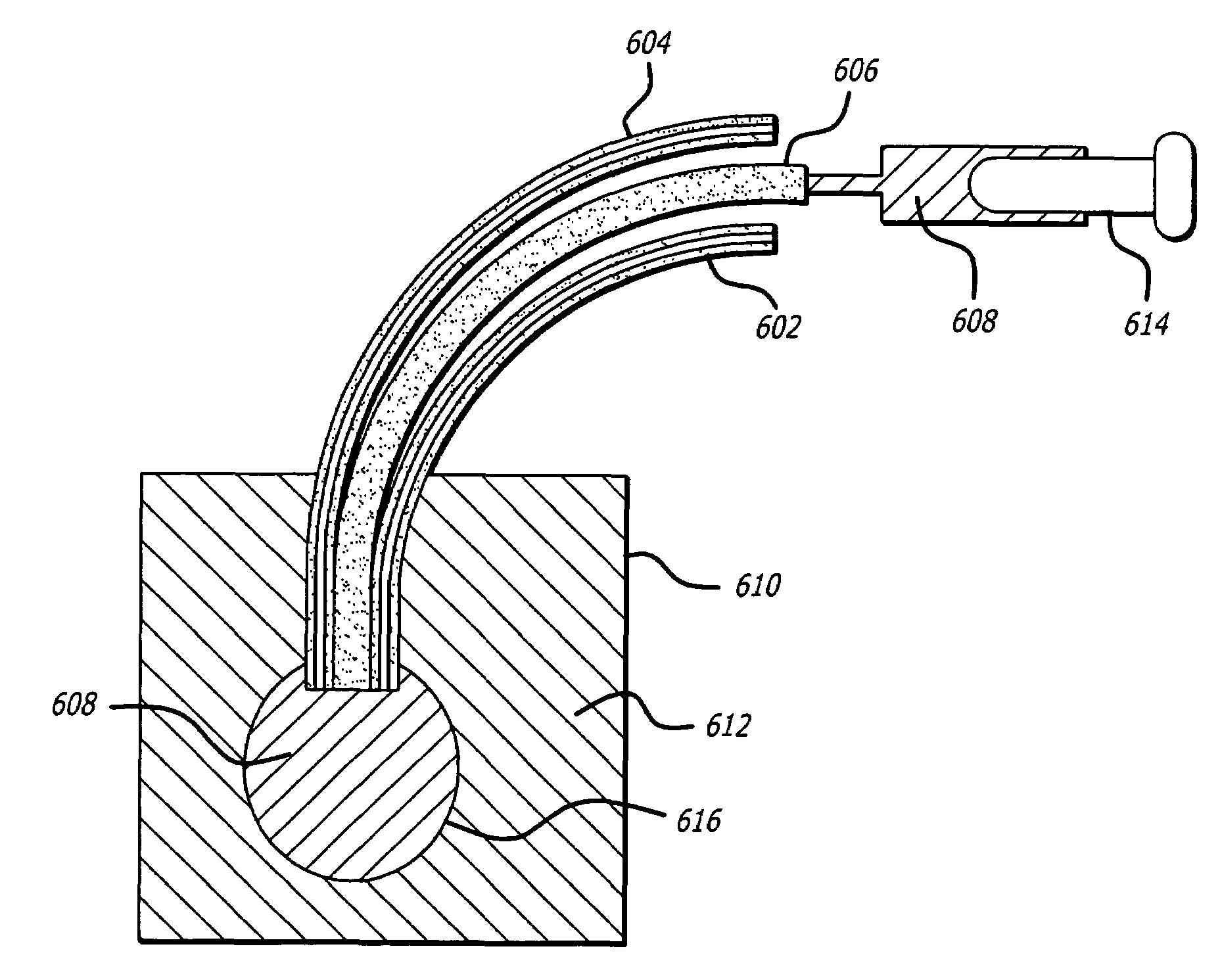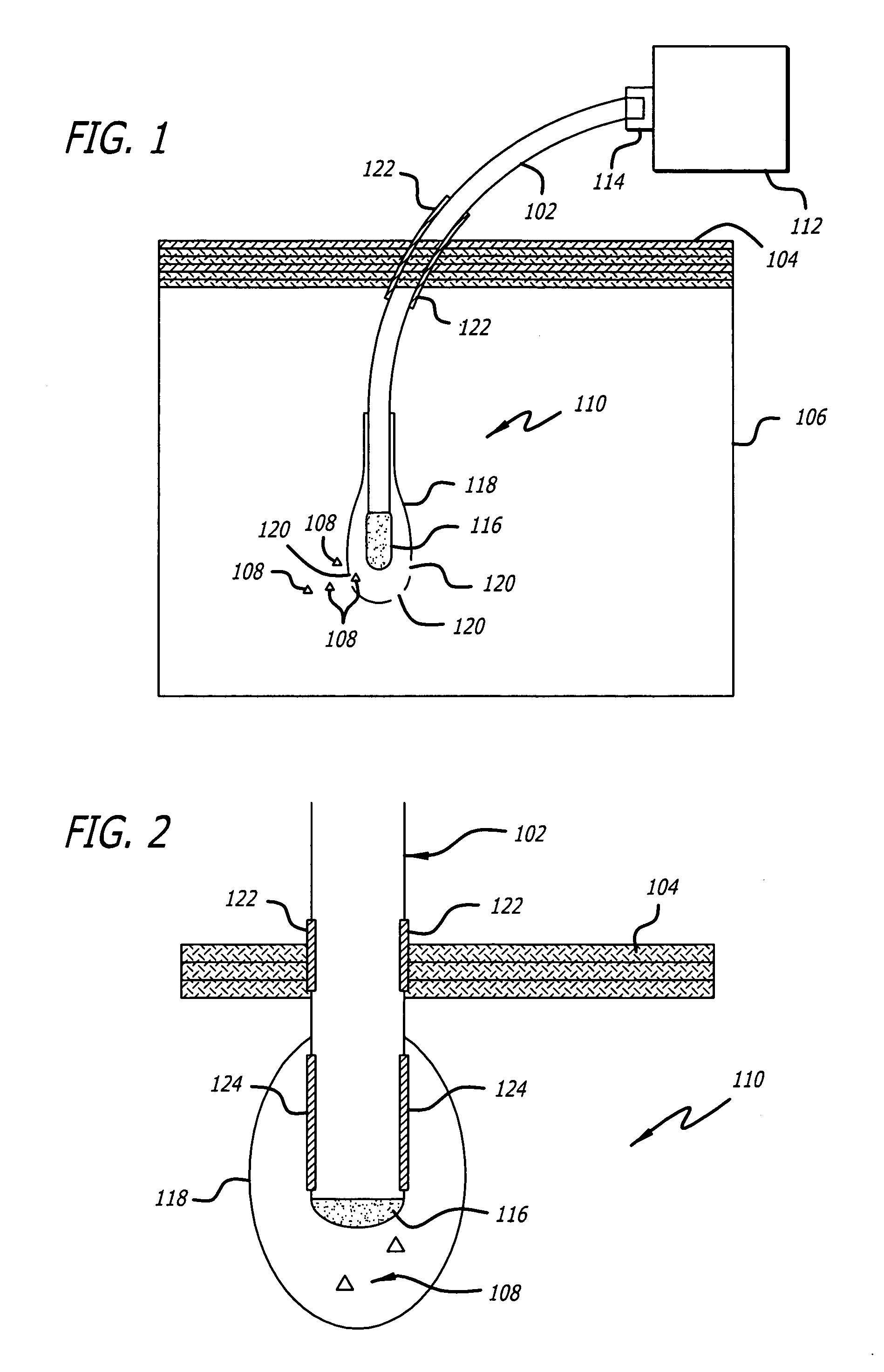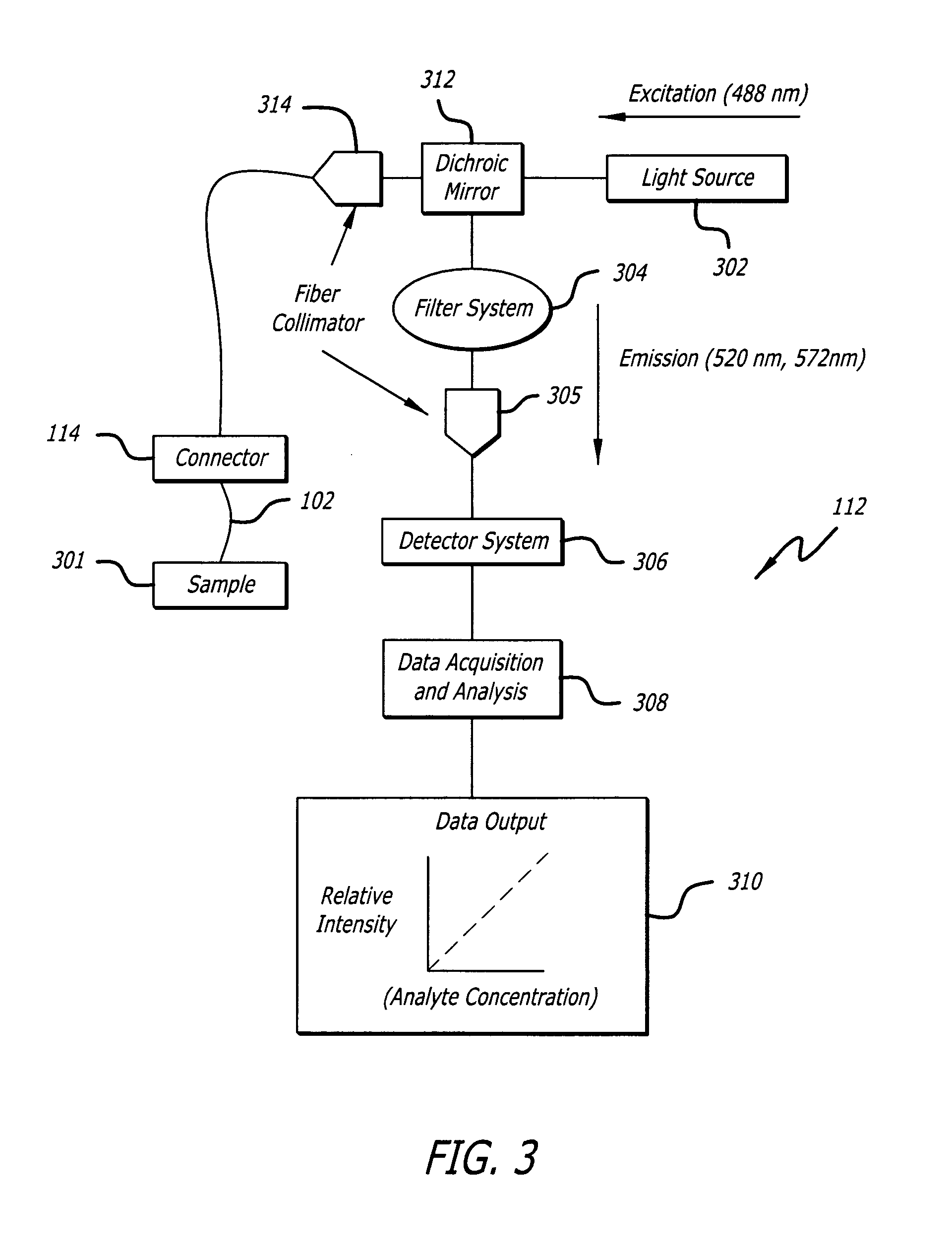Internal biochemical sensing device
a biochemical and sensing device technology, applied in the field of implanted devices, can solve the problems of repeated painful finger pricks, difficult to achieve, and serious complications, and achieve the effect of convenient patient transpor
- Summary
- Abstract
- Description
- Claims
- Application Information
AI Technical Summary
Benefits of technology
Problems solved by technology
Method used
Image
Examples
example 1
Material and Method of Forming a Biosensor Element
[0065]Note that the outer layer described and the method of preparing the outer layer described (in steps 3 and 5, for example) are optional. The outer layer may be desirable where it is desired to prevent the inner PEG layer (having reactants and fluorophores) from being directly exposed to the patient's tissue.
[0066]A. Composition of polyethylene glycol hydrogel inner and outer layer, including an exemplary sensing system for measurement of glucose by competitive binding of fluorophores.
[0067]
Inner PEGOuter PEGLayer (w / w)Layer (w / w)PEG-DA 575 (polyethylene glycol-32.06%32.15%diacrylate)PEG-NHS 3400 (a-acryloyl,ω-N-hydroxysuccimidyl ester of poly(ethylene 0.16%noneglycol)-propionic acid,Con A immobilized)TRITC-Con A / FITC-dextran (100 / 1) 0.13%noneDMPA (2,2-dimethoxy-2-phenylacetophenone, radical initiator) 0.32% 0.32%TPT (trimethylol propane 3.2% 3.3%triacrylate, Cross-linking agent to formcopolymer hydrogel for the sake ofstability ...
example 2
Fluorescence Resonance Energy Transfer Phenomenon as Applied to an Affinity Binding Assay System for Glucose Sensing
[0074]This example describes the fluorescence transduction techniques based the affinity binding assay system for polysaccharides based on the jack bean lectin concanavalin A (ConA). Mansouri S, Schultz J. “A Miniature Optical Glucose Sensor Based on Affinity Binding.”Biotechnology 1984, 885–90. This system uses a biosensor based on competitive binding between glucose and dextran. The assay aqueous solution is encapsulated within a hollow dialysis membrane permeable to glucose. In the assay, Con A is used as a receptor for competing species of fluorescein isothiocyanate (FITC) labeled dextran and glucose. FITC-dextran reversibly binds to Con A; as glucose concentration increases, FITC-dextran is displaced from ConA receptor sites, thus increasing the concentration and measurable fluorescence intensity of FITC-dextran.
[0075]Also, fluorescence resonance energy transfer (...
example 3
Clinical Analytes for which the Biosensing Device may be Configured to Detect, Include, but are not Limited to:
[0077]
Biological ElementsAnalytesEnzymes / Metabolitesglucose, cholesterol, amylase, urea, triglyceridespH, Na+, Ca2+, K+, H+, Cl−, HCO3, Fe, NH3Creatinine kinase, Creatinine, Aspartate amino-transferase, Phenylalanine, Lactate dehydrogen-ase, Akaline phosphotase, GOT, BilirubinGasesoxygen, carbon dioxide, ammoniaTherapeutic DrugsSalicylate, Acetaminophen (paracetamol),Ethanol, Theophylline, Dilantin, Gentamicin,HormonesTobramicin, Digoxin cortisol, estriol, pro-gesterone, aldosterone, cortisone, thyroxinebinding globulin, placental lactogen, prolactin,human chorionic gonadotropin, insulin,parathyroid hormone, growth hormone,angiotensin, oxytocin, vasopressinAntibodiesIgM (total), IgG (specific), Syphilis, RubellaAntigensA & B, Rh, Hepatitis, Alpha-fetoprotein,various cancer proteinsHall E. (1991) Biosensors. New Jersey: Prentice Hall.
PUM
 Login to View More
Login to View More Abstract
Description
Claims
Application Information
 Login to View More
Login to View More - R&D
- Intellectual Property
- Life Sciences
- Materials
- Tech Scout
- Unparalleled Data Quality
- Higher Quality Content
- 60% Fewer Hallucinations
Browse by: Latest US Patents, China's latest patents, Technical Efficacy Thesaurus, Application Domain, Technology Topic, Popular Technical Reports.
© 2025 PatSnap. All rights reserved.Legal|Privacy policy|Modern Slavery Act Transparency Statement|Sitemap|About US| Contact US: help@patsnap.com



